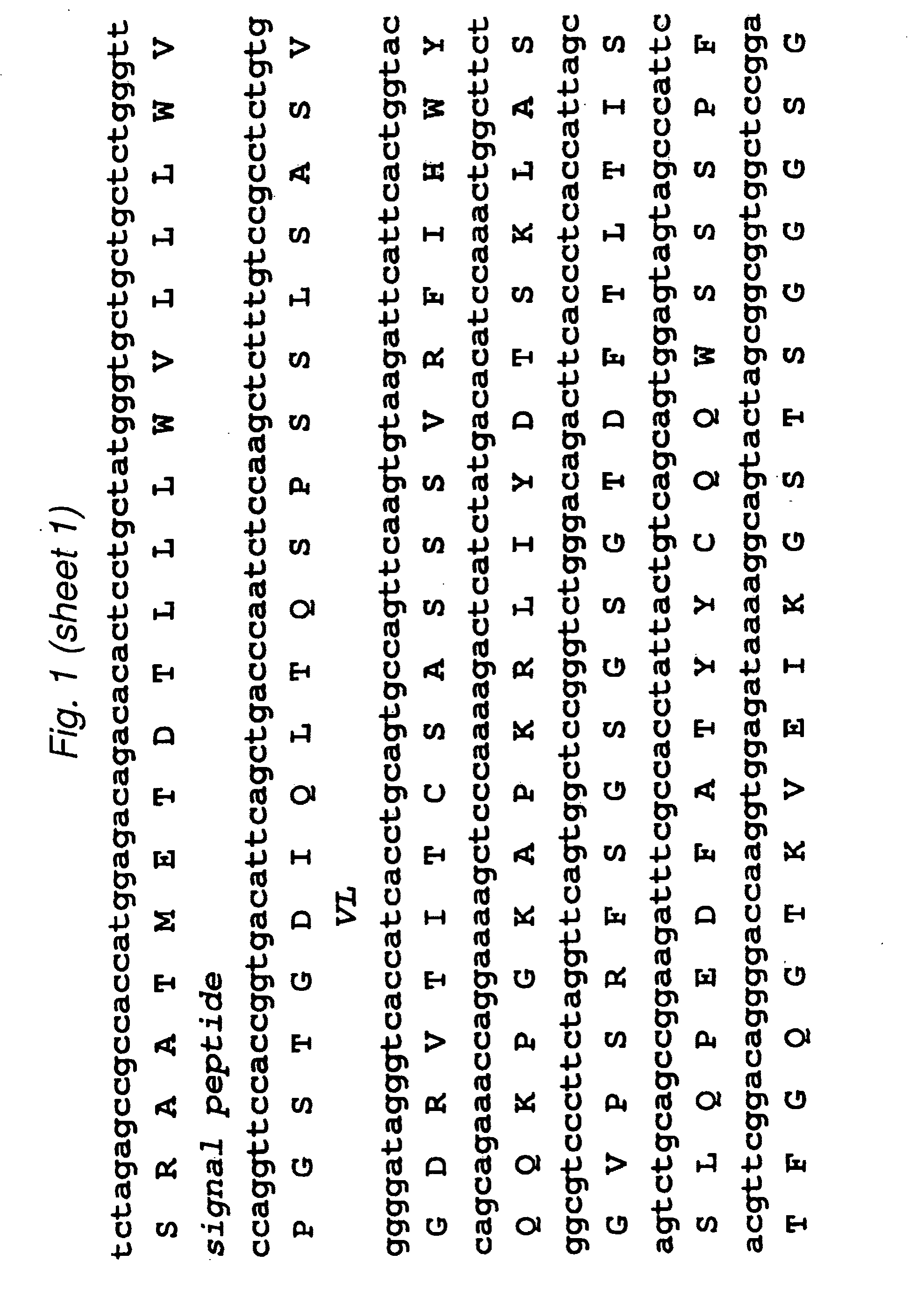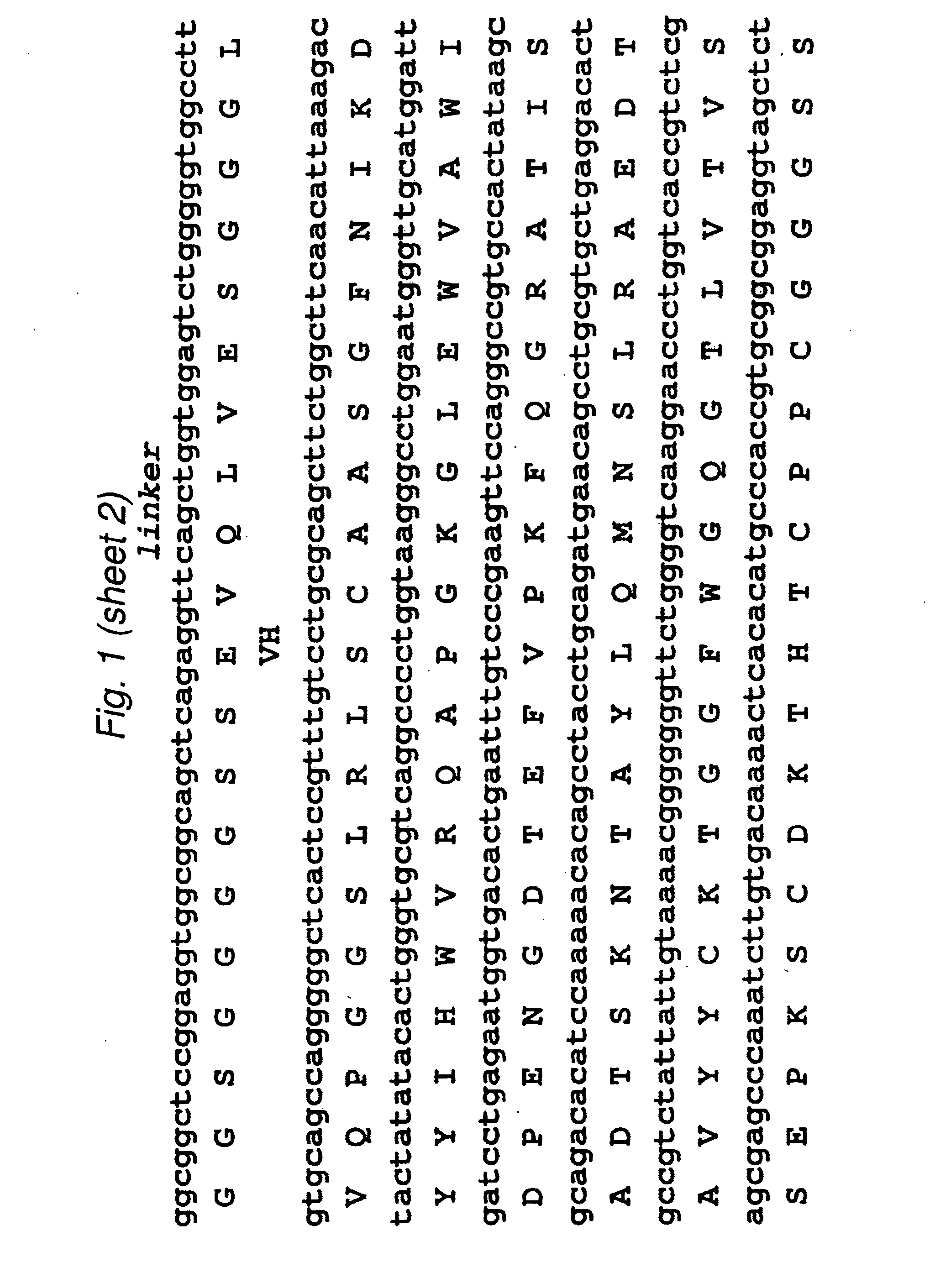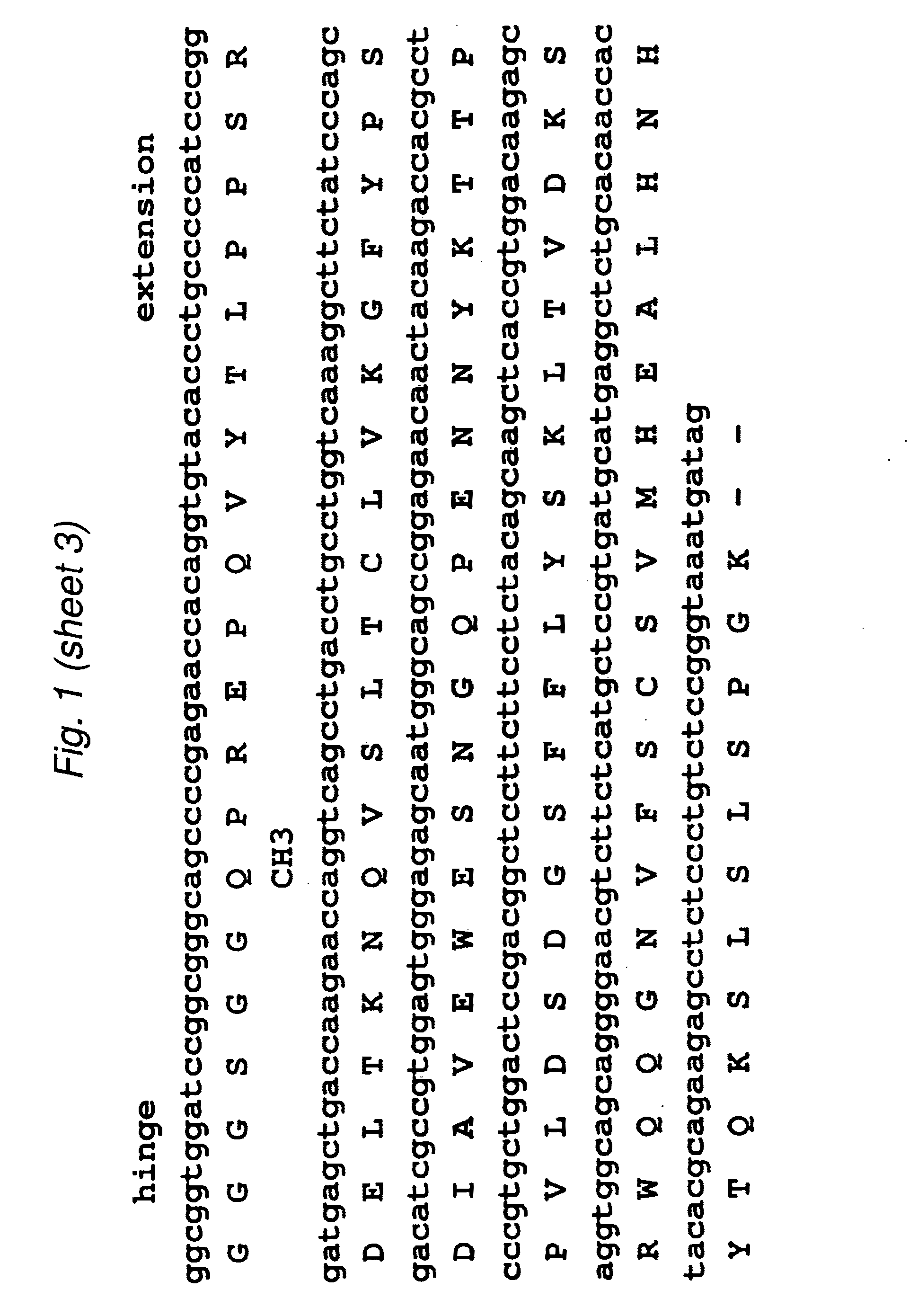Engineered Anti-Prostate Stem Cell Antigen (PSCA) Antibodies for Cancer Targeting
a technology of prostate stem cells and antigens, applied in the field of engineered antiprostate stem cell antigens (psca) antibodies for cancer targeting, can solve the problems of inability to reliably identify early-stage diseases, and inability to predict the emergence of the typically fatal metastatic stage of the diseas
- Summary
- Abstract
- Description
- Claims
- Application Information
AI Technical Summary
Benefits of technology
Problems solved by technology
Method used
Image
Examples
example 1
Design and Gene Assembly of Anti-PSCA Antibody Fragments
[0099]The 2B3 variable light (VL) and variable heavy (VH) genes were derived from the humanized version of the mouse monoclonal 1G8 antibody. CDR grafting had been previously used to construct the intact humanized antibody (Z. Gu, T. Olafsen et al., 2005). Starting from the DNA of the intact 2B3 antibody in the pEE12 expression vector, primers were designed to amplify the individual VL- and VH chains. The VL chain contained a AgeI restriction site while the VH chain included a XhoI restriction site at its C-terminal end. The two genes were then fused by overlap-extension PCR to produce the single chain Fv (scFv) fragments with the orientation of VL-VH, joined by an 18 residue long linker, which is GlySer rich. Following overlap PCR, the product was cloned into TOPO vector (Stratagene) and sequenced. Subcloning continued into pUC18 with the restriction sites AgeI and EcoRI where the to fuse a signal peptide to the 5′-end (upstre...
example 2
Expression, Selection and Purification of Minibodies
[0100]A total of 2×106 NS0 mouse myeloma cells (Galfre and Milstein, 1981) were transfected with 10 ug of linearized (cut with SalI) vector DNA by electroporation and selected in glutamine-deficient media as described (Yazaki, Shively et al. 2001; Yazaki, Sherman et al. 2004). Minibody clones were screened for expression by ELISA, whereby the desired protein was captured by goat anti-human IgG (Fc specific) and detected by alkaline phosphastase (AP)-conjugated goat anti-human IgG (Fc specific) (both from Jackson ImmunoResearch Labs, West Grove, Pa.). The highest producing clones were expanded and brought to terminal culture.
[0101]Minibodies were purified by first treating the cell culture supernatant with 5% AG1®-X8, 100-200 mesh (Bio-Rad laboratories, Hercules, Calif.) overnight to remove phenol red and cell debris, then concentrated down to 100 ml and dialyzed versus 50 mM Acetic Acid, pH 5.0. Protein was then loaded onto a 1.6 m...
example 3
Characterization of Antibody Fragments
[0102]Size and composition of purified proteins was analyzed by SDS-PAGE (FIG. 2) under non-reducing and reducing (1 mM DTT) conditions. Native structural size was determined by size exclusion columns (Superdex 75) (Pharmacia) (FIG. 3).
[0103]To examine the structural characteristics of the 2B3 minibody, SDS-PAGE was conducted under reducing and non-reducing conditions. The minibody migrated with a MW of ˜47 kDa under reducing conditions and ˜95 kDa under non-reducing (FIG. 2). Binding activity by flow cytometry and immunofluoresecent staining (FIGS. 4 and 5) in two distinct cell types demonstrated the minibody recognizes cellular PSCA. The minibody's apparent affinity with respect to its intact antibody counterpart and the original mouse monoclonal antibody (1G8), was determined by competition ELISA. The relative affinity of 1G8 was measured to be 5 nM, the humanized 2B3 antibody was 25 nM, whereas the minibody was 46 nM. Thus the single-chain p...
PUM
| Property | Measurement | Unit |
|---|---|---|
| size | aaaaa | aaaaa |
| pH | aaaaa | aaaaa |
| MW | aaaaa | aaaaa |
Abstract
Description
Claims
Application Information
 Login to View More
Login to View More - R&D
- Intellectual Property
- Life Sciences
- Materials
- Tech Scout
- Unparalleled Data Quality
- Higher Quality Content
- 60% Fewer Hallucinations
Browse by: Latest US Patents, China's latest patents, Technical Efficacy Thesaurus, Application Domain, Technology Topic, Popular Technical Reports.
© 2025 PatSnap. All rights reserved.Legal|Privacy policy|Modern Slavery Act Transparency Statement|Sitemap|About US| Contact US: help@patsnap.com



